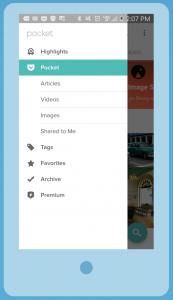— October 21, 2017

Tumisu / Pixabay
Email’s incredibly effective at activating and engaging your contact database. There’s a reason why this seemingly old-school medium continually ranks as one of marketers’ most effective channels. It proves its worth time and time again.
One way to make email work for you to engage and qualify your leads is to create email workflows or sequences to nurture contacts. You might create an outbound marketing campaign for new prospects, a workflow that nurtures a prospect who’s downloaded an asset on your site, a sequence to nurture prospects you’ve deemed unqualified, or a sequence for salespeople to identify and nurture their leads. Each uses automation to send a series of customized, or even personalized, emails to guide contacts through your marketing funnel and to a qualified lead. (Note: much of the advice in this post can also be applied to customer sequences for onboarding or upsell campaigns.)
There are many different ways to structure an email sequence or workflow. It comes down to what the purpose is, who the recipients are, who’s sending it and what content you have to populate a campaign.
Here, we address some of the common questions and must-know info to create your own sequences, but know that there are no hard-and-fast rules. You should adapt campaigns to work for your business.
How many emails should I send?
Five to eight emails for an initial sequence is ideal, which might span a period of one to two months depending on your desired frequency of sends. Keep in mind that there should be a plan for ongoing nurtures after the initial sequence should contacts engage, but not convert. This might be a monthly news update, quarterly scheduled check-ins or sporadic offers.
Also keep in mind here that you want to make multiple attempts at engaging contacts. If someone does not open an email, you can branch them off and resend the email with a different subject line, then delay the rest of the sequence. You don’t have to do this for every email touchpoint, but you may want to implement for the first send as well as the last send with a call to convert.
Who should the emails come from?
Be sure the email sends from a salesperson’s or marketer’s email address with their name – not a generic or no-reply email. For outbound sequences, use that first email to introduce the salesperson and your company personally. Contacts in inbound sequences will have the brand recognition already, but will still need the introduction to the email sender.
Position the sender as a resource. So even if the goal of the email is to read a blog, make it easy for the recipient to respond to the salesperson or marketer and ask a question or request more information.
What should my emails say?
Your email should relate directly to why you’re contacting the prospect. It should set an exceptional experience with your company and provide enough value that it stands out from the hundreds of other emails in your prospect’s inbox. If they downloaded a white paper on AI for marketing, offer messages or additional content that expands their knowledge on the topic. If you’re trying to sell them your email marketing solution, share content that explains how it will better their business. Most important: make your emails about them, not you.
You also want to vary the type of content or promotion throughout your email series, meaning that you offer a mix of blogs, case studies, larger content assets and publications, special offers and direct sales asks. Remember that you already have contact information and can track engagement via email analytics, so really question whether you should push recipients to gated content or instead “gift” them the asset.
How should I format my emails?
Keep your emails as brief as possible, and avoid large blocks of text. People won’t read them. Keep paragraphs to one sentence or two short ones, making the email easy to skim.
Think about how your offers will provide immediate value to the recipient, so they will want to spend time with your company. For instance, if you offer a cloud storage solution, share three ways your solution is an improvement over your prospects’ existing solution.
When or in what order should I send emails?
Try to match the topic and offer of your email to stages of the funnel, while maintaining a variety. For instance, you may want to start with an educational blog, then push a case study further down in the sequence, and end with CTA for a sales conversation.
How should I pace my emails?
It depends on your audience, and it’s something to test. We generally recommend one a week, but have also seen success with two emails per week. You do want to keep in mind if contacts enrolled in your workflow will receive any other emails from your company during that time (events, company/product news, etc.) and how that might affect the frequency.
Do I need to remove contacts from the sequence?
Possibly, depending on your sequence goal and structure. You can take contacts out of a nurture sequence as soon as they raise their hand to move to sales since they’ll be entered into a sales conversation. For any inbound sequences, you can implement lead scoring so you know which leads are qualified for sales and enter them into a different sequence, while other less qualified leads are nurtured toward that stage.
How do I measure success?
Ultimately, you want to know how many qualified leads are coming from your email workflows and being passed to sales. Are these leads better primed than others? Do they close faster?
A step below that, you want to track engagement metrics so you can refine your campaigns. What are your open and click rates? You should A/B test and continually optimize each email. How many emails in the sequence are contacts engaging with? How many are converting or requesting a sales meeting or demo during the sequence?
What insights can I gain from these metrics?
The most engaged contacts are likely the most primed for sales. Sales should also see what content and offers the recipients have engaged with, as that is a clue to what their challenges are or what solutions they’re most interested in. Sales will have a head start to their conversation and can better personalize their initial conversations with prospects.
When should I evaluate and optimize campaigns?
Always. You want to optimize email performance continually – focus on emails with low open or click rates and refresh the subject lines, timing, email content and offer. A/B test each send with one variation (a different subject line, a different CTA, etc.) and choose the winner, then set up a new A/B test with a different variation and choose that winner, and so on. With an outbound sequence, you can segment the recipients into different cohorts depending on the size of your starting list, so you can apply learnings from the first cohort to others. You should also continue using these sequences as you acquire new lists or identify new leads to nurture.
Digital & Social Articles on Business 2 Community
(64)


